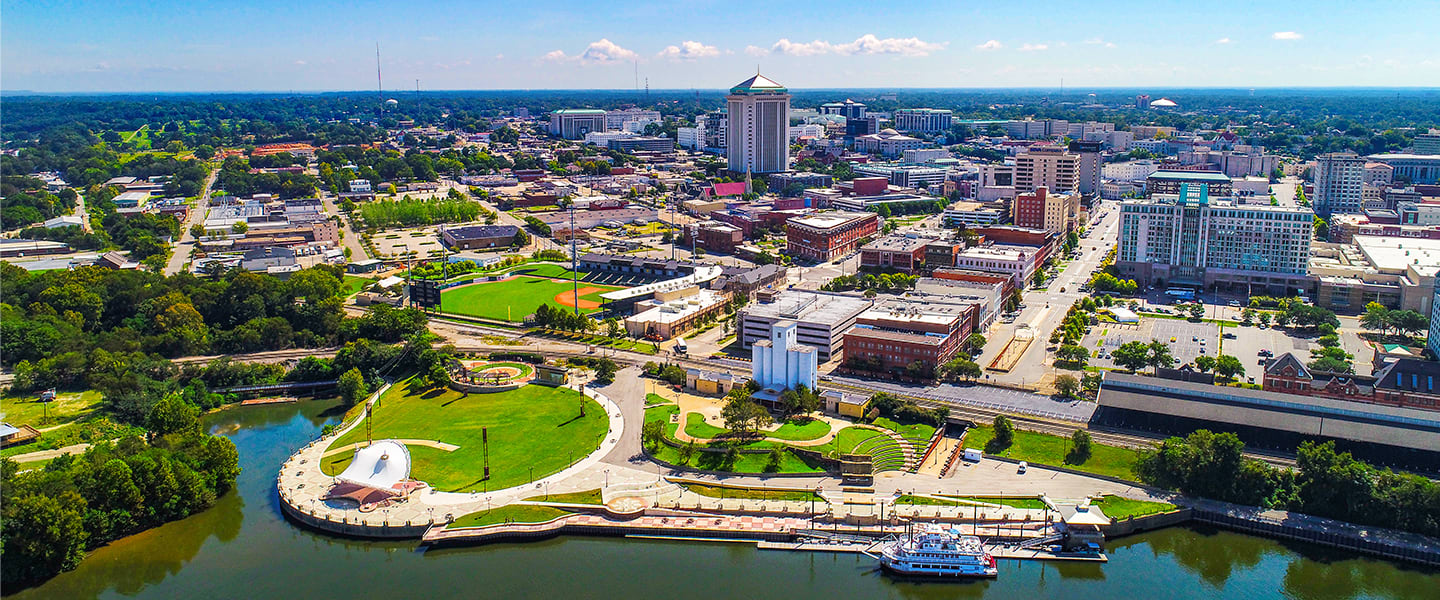Nursing Homes in Alabama

Overview of Nursing Homes in Alabama
Families searching for senior living in Alabama will be welcomed by a mild climate and a variety of lifestyle options. In the state’s northern counties, the Tennessee River and Appalachian Mountains pass through and provide an abundance of beautiful scenery and opportunities for outdoor activities. Temperatures rise gradually as you head south toward the coast, where the white sandy beaches of Gulf Shores attract millions of visitors throughout the year. Cities like Biloxi and Birmingham have been experiencing a recent population growth due to their Southern charm, pleasant weather, and relatively low costs of living, all factors which help make Alabama an ideal retirement destination.
There are more than 50 nursing homes in Alabama. A Place for Mom’s Senior Living Advisors can provide you with a list of nursing homes in Alabama to help you find the community that fits your needs and budget.
The median monthly cost of a private room in a nursing home in Alabama is about $6,800, according to Genworth.
Top-rated Nursing Homes facilities in Alabama
Gardens of Eufaula
My mother and my mother in law both lived at the Gardens of eufaula. Both had good experiences and were very happy there. I hope that my wife and I will be able to get a room there one day. I recommend...
Gardens of Clanton
A wonderful home for the elderly. The care is awesome so is the food. They have lots of great activities for the residents. There is a great staff to help with any need. My Aunt loves her spacious rooms.
Limestone Lodge
My Aunt's friend is a member of the Limestone Lodge family and we have been very impressed with her overall care there. Her room is clean and tidy, she does not complain about the food and she is always...
Top-rated Nursing Homes facilities in Birmingham
See top facilitiesDanberry at Inverness
5 on all. My only drive with a facility is my mom's neighbor has a dog that barks everybody. The facility knows about it management team, but it never gets any better. If it doesn't, we're gonna write the...
Monark Grove Greystone
We recently moved my father-in-law into Monark Grove Senior Living, and the experience has been nothing short of exceptional. From the moment we walked through the doors, we were greeted with warmth,...
The Ridge at Grandview
I would rate each of these a 5. I think it is a wonderful place for seniors. Small enough for good care. Very clean. Friendly and caring staff.
Top-rated Nursing Homes facilities in Mobile
See top facilitiesSomerby of Mobile
There seemed to be confusion sometimes between what was told to me one day, and then different a few days later. For instance, on a Sunday, I was told that my SIL needed more protein drink. The nurse and I...
Proveer at Port City
Mom has been happy there. The care givers have always tried to help her when needed. One assistant is super helpful to mom. I like that they try to make an effort to do things they know mom would like. She...
Gordon Oaks Senior Living
We love the place [name removed] enjoys being there and he loves the workers and thanks for your help. I would rate them all 5 rating. I like everything about the community there is nothing bad about it. Yes...
Top-rated Nursing Homes facilities in Madison
See top facilitiesMerrill Gardens at Madison
The staff are more than willing to help us through challenges. Seem to genuinely care about residents. Room sizes are adequate. Amenities are varied and plentiful.
The Madison Village
Our building had a Friday night get together, where we had food, played games and had fun. None of there other buildings did this, so that's what made it so special. I'm no longer living there, as I have...
Madison at The Range
First off, we could get a doctor to tell us our father had dementia. Because originally we were looking at assisted living but dad showed all the signs of dementia. So my sister and I thought it would be...
Top-rated Nursing Homes facilities in Huntsville
See top facilitiesResidences at Wellpoint
It's a small place. You trade in abundant square footage and a variety of activities for the comfort of a great staff to resident ratio. It really feels intimate and personal. You get to know everyone very...
Brookdale Jones Farm
Overall my mom really enjoys it there. They do have problems keeping and hiring staff. Meals are generally good - however breakfast needs some work. The activities are great and there are lots of them.
The Goldton at Jones Farm
The staff is so lovely! We always see the same pleasant faces. The building is CLEAN - and its smells clean. The dining room is cheery and the food is varied and cooked well (albeit maybe not exactly like...
Top cities in Alabama for nursing homes
Find nursing homes in other states
Other senior living options in Alabama
Find assisted living near you
The information contained on this page is for informational purposes only and is not intended to constitute medical, legal or financial advice or create a professional relationship between A Place for Mom and the reader. Always seek the advice of your health care provider, attorney or financial advisor with respect to any particular matter, and do not act or refrain from acting on the basis of anything you have read on this site. Links to third-party websites are only for the convenience of the reader; A Place for Mom does not endorse the contents of the third-party sites.
Please enter a valid email address.
A Place for Mom is paid by our participating communities, therefore our service is offered at no charge to families. Copyright © 2024 A Place for Mom, Inc. All Rights Reserved. Privacy & Terms. Do Not Sell My Personal Information.